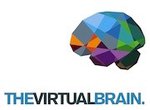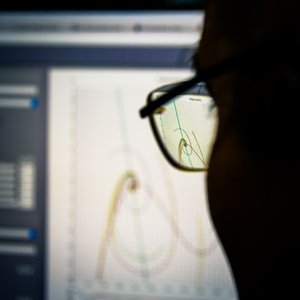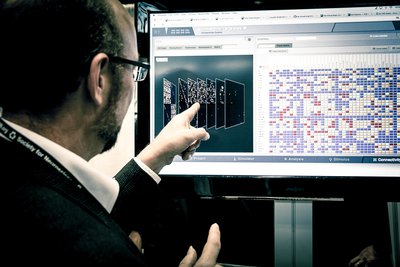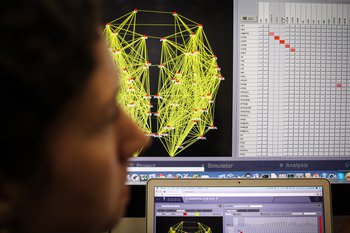TVB-CD
Building a Personalized Virtual Brain with Neurodegenerative Disease to Guide Clinical Decisions

Project description
Alzheimer’s disease (AD) is marked by cognitive dysfunction emerging from altered brain network activity. Alterations across similar brain networks are also implicated in cognitive impairments that accompany Parkinson’s disease (PD). Identification, development and validation of clinically relevant biomarkers specific to AD and PD is therefore needed. The goal of our research program is to understand neurodegenerative disorders from the perspective of dynamical network function.

While degenerative disease may affect certain brain regions, it is becoming clear that the impact and expression of the disease is best captured by changes in large-scale brain network dynamics. Intensive efforts are underway to build large empirical neuroimaging datasets specific to AD and PD, yet the framework to link these data with the brain function of individual patients is lacking. We provide a computational and theoretical framework for simulating whole-brain networks, TheVirtualBrain (TVB).
We will use structural and functional patient data from the Alzheimer’s Disease Neuroimaging Initiative (ADNI), the Sydney Memory and Ageing Study (Sydney MAS), and the Parkinson’s Progression Markers Initiative (PPMI) to set the initial constraints for estimation of the model parameters. The goal of the proposed research project is to understand the effects of clinical conditions on brain network dynamics at the level of the individual. In particular, we will characterize commonalities and differences in network dynamics across AD and PD and map the underlying biophysical substrates to individual clinical profiles. Furthermore, we will integrate new data from prospective work done in Baycrest and with other partnering institutes from newly admitted clients and out-patients. These minimal datasets serve to assess the practical needs for accurate initial assessment of brain function, the tracking of disease progression and the efficacy of therapeutic interventions.
Objectives
The first aim of this research project is to directly test the hypothesis that AD and PD can be differentiated by specific spatiotemporal patterns of local and distributed processing.
The second aim is to test the hypothesis that disease-specific alterations in network communication can be detected in prodromal forms of AD and PD and used to prevent disease progression and predict clinical outcome.

While the third aim is to identify the underlying common and disease-specific biophysical substrates that lead to alterations in large-scale network dynamics. Importantly, we will identify the biophysical substrates that best predict an individual’s disease trajectory and clinical outcome. TVB can therefore be used to evaluate the clinical potential of therapeutic interventions early in development to help converge on targets that are most likely to have the best outcome.
Collaboration with HBP
TVB software has been co-developed with Dr. Petra Ritter (Charité) and Dr. Viktor Jirsa (Aix-Marseille University - AMU). Each of these collaborators already contribute to HBP subprojects (SP4, SP5 & SP8) and workpackages (WP5.10) under the framework of TVB.

More specifically, through the development of an efficient and scalable multi-scale brain simulation software and tools for data-driven reconstruction of large-scale connectomes from MRI data, we will contribute to SO5.4 (Deliver and maintain a suite of tools for data curation, spatial integration, and viewing of multi-level human and rodent data); SO5.7 (Enable researchers to work with dynamic functional data from experiments and simulations); SO6.3 (Develop and scale tools and workflows for reconstruction and simulation of models of SO6.1).
Other collaboration activities will come in the form of educational workshops that train users to efficiently use TVB, attendance at SP5 neuroinformatics meetings, attendance at platform demos and regular working meetings with Ritter (Charité; Lead CDP8) and Jirsa (AMU; Deputy Lead SP4).
Partnering Organisations


Biography

Dr. Randy McIntosh (Project Coordinator)
Senior Scientist, Baycrest Centre, University of Toronto
Dr. McIntosh is a pioneer in the study of how different parts of the brain work together to bring about the wide range of human mental operations. He has combined modern functional neuroimaging methods with mathematical modeling to characterize the changes in brain network dynamics related to awareness and learning, and shown how these dynamics change in normal aging and different clinical conditions.
Publications
Key facts
Time frame: 2018 to 2024
Origin: Spontaneous Application
Funding: Bright Focus Foundation (USA), Centre for Aging and Brain Health Innovation (Canada)



